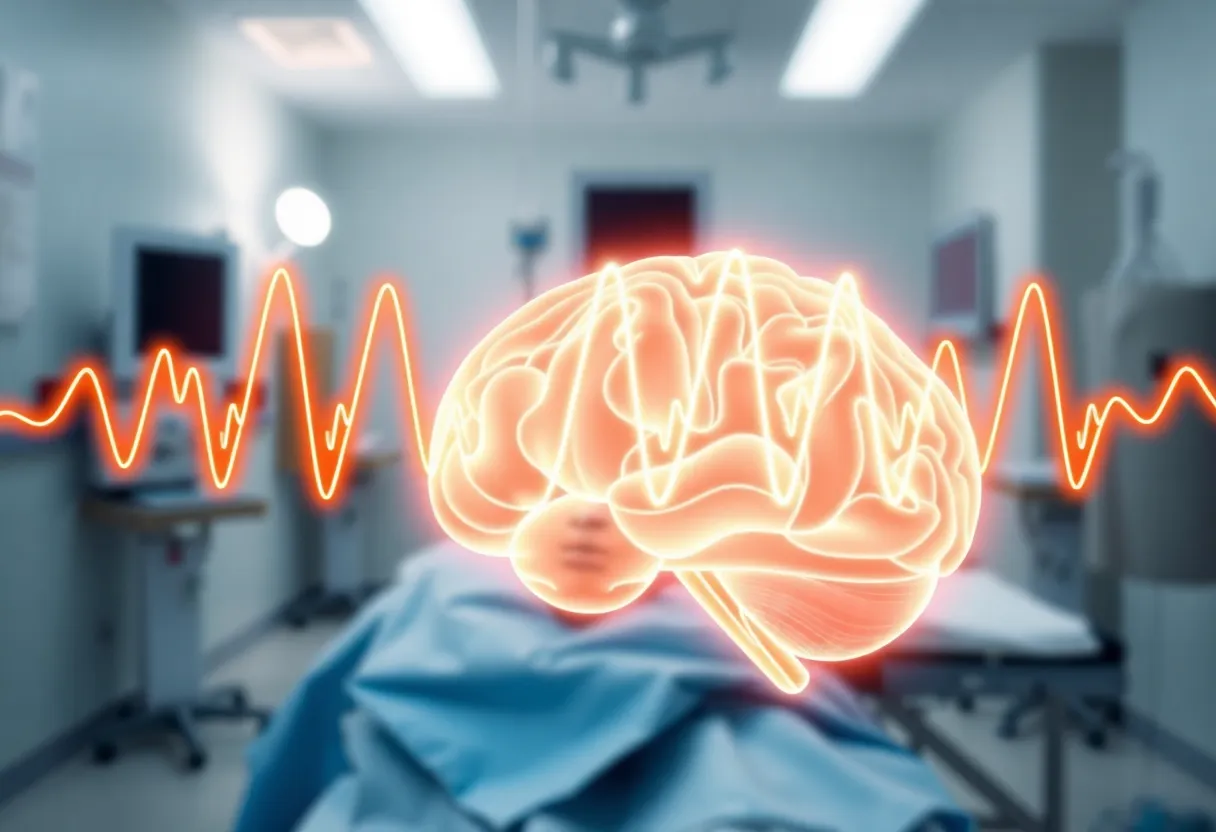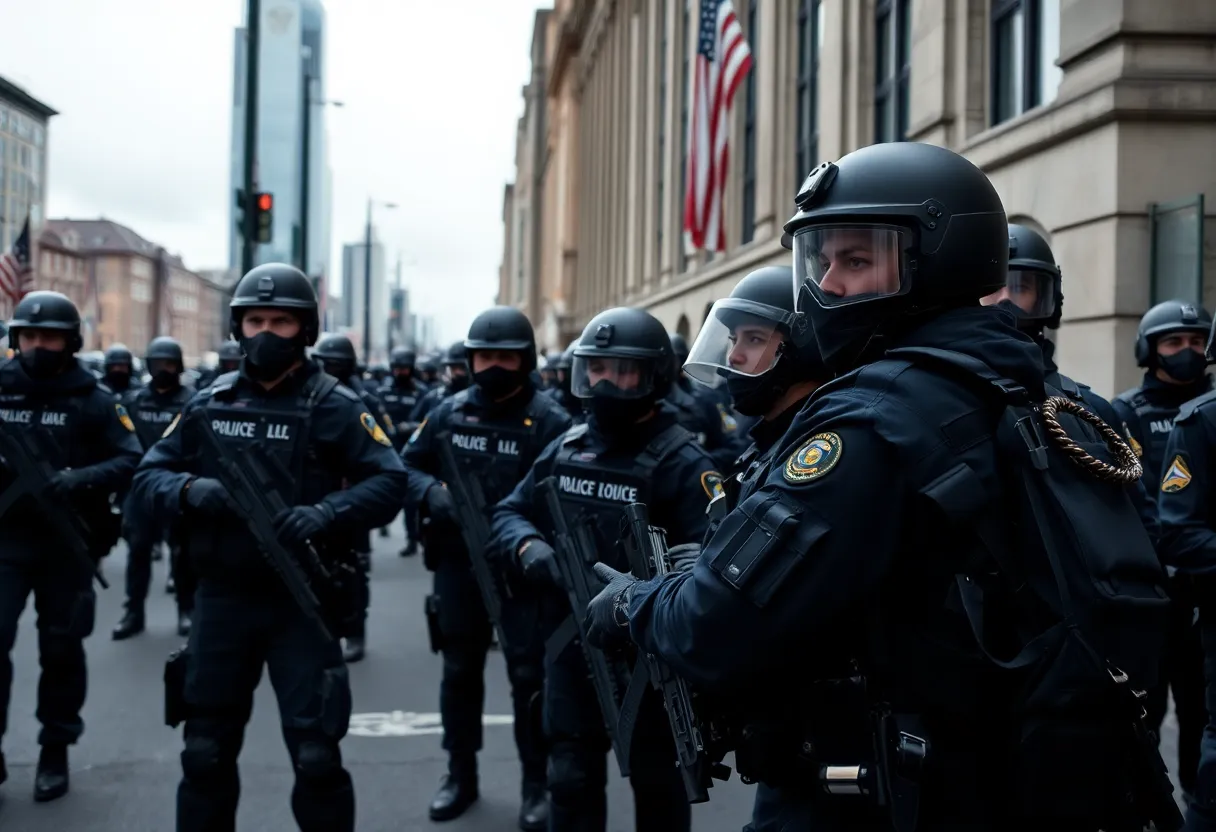New York, October 17, 2025
News Summary
A new study published in Resuscitation reveals around 40% of people undergoing CPR may experience consciousness during the procedure. The research monitored 567 individuals who experienced cardiac arrest across 25 hospitals, challenging the belief that brain damage occurs quickly after oxygen deprivation. Many survivors reported clear memories or perceptions during resuscitation, which could influence future CPR practices and organ transplantation protocols. As the brain exhibits organized activity even during CPR, researchers aim to further understand these phenomena for improved medical techniques.
New York
Study Finds around 40% of People Undergoing CPR May Experience Consciousness
A new study published in Resuscitation indicates that around 40% of people undergoing CPR may experience consciousness during the procedure. The research monitored 567 individuals who experienced cardiac arrest resuscitation across 25 hospitals, and found that patients can display signs of perception, such as memories or dreamlike episodes, even while appearing unconscious. The study’s findings challenge the long-standing belief that permanent brain damage follows ten minutes without oxygen and suggest the brain may show signs of electrical recovery long into ongoing CPR.
Key results and survivor accounts
Overall survival in the monitored group was low, with less than 10% of these patients survived. Of the patients who survived, researchers interviewed 28 out of 53 participants reporting near-death experiences. Among survivors, about four in ten recalled memories or perceptions of consciousness during the dying process. Reported experiences included sensations described as separation from the body, observing events without distress, and meaningful evaluations of past actions and relationships.
Physiological interpretation and distinctions
Investigators emphasize that these experiences should not be conflated with simple hallucinations or with a phenomenon labeled CPR-induced consciousness. Instead, the authors propose that natural inhibitory systems may be removed from a “flatlined” brain, potentially opening up new dimensions of reality and allowing lucid recollections. This interpretation points to transient, organized brain activity emerging during resuscitation rather than random, purely hallucinatory events.
Implications for resuscitation care and organ transplantation
Researchers indicate the findings could affect future resuscitation practice and organ transplant protocols. The study suggests that understanding how and when the brain can regain organized activity during CPR may inform the design of new resuscitation techniques and strategies to prevent brain injuries during cardiac events. Additionally, the findings have substantial implications for organ transplantation, suggesting a potential to enhance methods used for reviving organs after circulatory death.
Scope, methods and limitations
The study prospectively monitored survivors of cardiac arrest who received resuscitation across 25 hospitals, tracking clinical outcomes and later interviewing survivors about subjective experiences. The research team reported that under 10% of the 567 monitored patients survived, and that detailed interviews were conducted with the subset of survivors who reported near-death experiences. The investigators caution that the evolutionary purpose of these experiences remains unknown and that reported perceptions do not yet yield a consensus physiological mechanism.
What this means going forward
The study’s authors state the new physiological insights could prompt further research into how to preserve and restore brain function during and after cardiac arrest. Potential applications include refining timing and techniques for CPR, targeting therapies to limit brain injury during low-perfusion states, and improving protocols for organ recovery after circulatory death. They also recommend further controlled studies to validate findings, examine mechanisms, and assess how frequently similar perceptions occur in broader patient groups.
Background context
Near-death experiences have been reported in many settings and have been studied from psychological, cultural, and medical perspectives. Previous clinical assumptions held that prolonged lack of oxygen quickly leads to irreversible brain damage, often cited as a ten-minute threshold. The current study challenges that simplified timeline by documenting instances of organized brain activity and subjectively recalled perceptions during active resuscitation.
Frequently Asked Questions
What did the study find about consciousness during CPR?
A new study published in Resuscitation indicates that around 40% of people undergoing CPR may experience consciousness during the procedure.
How many patients were monitored and how many hospitals were involved?
The study monitored 567 individuals who experienced cardiac arrest resuscitation across 25 hospitals, where less than 10% of these patients survived.
How many survivors were interviewed about near-death experiences?
Of the patients who survived, researchers interviewed 28 out of 53 participants reporting near-death experiences.
How common were memories or perceptions among survivors?
Four in ten survivors recalled memories or perceptions of consciousness during the dying process.
Do researchers interpret these as hallucinations?
The study emphasizes that these near-death experiences should not be confused with hallucinations or CPR-induced consciousness. The authors suggest that natural inhibitory systems may be removed from a “flatlined” brain, potentially opening up new dimensions of reality and allowing lucid recollections.
| Feature | Finding |
|---|---|
| Primary finding | A new study published in Resuscitation indicates that around 40% of people undergoing CPR may experience consciousness during the procedure. |
| Number monitored | 567 individuals |
| Number of hospitals | 25 hospitals |
| Survival rate | less than 10% of these patients survived |
| Survivor interviews | Of the patients who survived, researchers interviewed 28 out of 53 participants reporting near-death experiences. |
| Recall frequency among survivors | Four in ten survivors recalled memories or perceptions of consciousness during the dying process. |
| Physiological interpretation | natural inhibitory systems may be removed from a “flatlined” brain, potentially opening up new dimensions of reality and allowing lucid recollections |
Deeper Dive: News & Info About This Topic
HERE Resources
Additional Resources
- Science Alert: Surgeons Resuscitate Dead Heart
- BBC: The Pros and Cons of Cardiopulmonary Resuscitation
- USA Today: Near-Death Experiences During Resuscitation Study
- Wikipedia: Cardiopulmonary Resuscitation
- Google Search: CPR and Consciousness

Author: STAFF HERE DALLAS WRITER
The DALLAS STAFF WRITER represents the experienced team at HEREDallas.com, your go-to source for actionable local news and information in Dallas, Dallas County, and beyond. Specializing in "news you can use," we cover essential topics like product reviews for personal and business needs, local business directories, politics, real estate trends, neighborhood insights, and state news affecting the area—with deep expertise drawn from years of dedicated reporting and strong community input, including local press releases and business updates. We deliver top reporting on high-value events such as the State Fair of Texas, Deep Ellum Arts Festival, and Dallas International Film Festival. Our coverage extends to key organizations like the Dallas Regional Chamber and United Way of Metropolitan Dallas, plus leading businesses in telecommunications, aviation, and semiconductors that power the local economy such as AT&T, Southwest Airlines, and Texas Instruments. As part of the broader HERE network, including HEREAustinTX.com, HERECollegeStation.com, HEREHouston.com, and HERESanAntonio.com, we provide comprehensive, credible insights into Texas's dynamic landscape.




